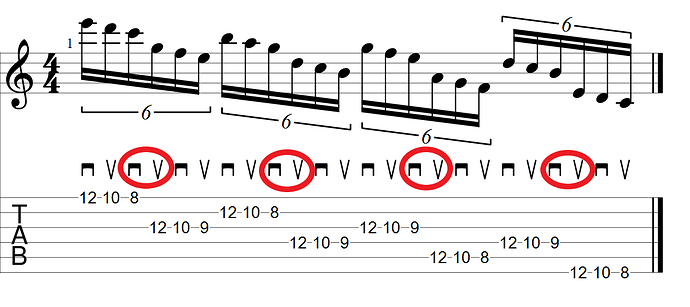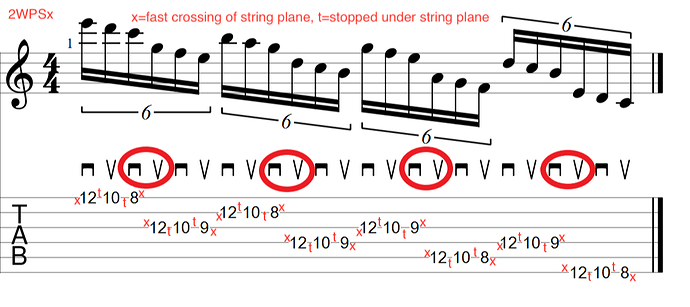Hi everyone!
I’ve been wondering how to best approach string skipping runs that involve inside picking. For example, when having to go from a downstroke on the high E string to an upstroke on the G string, the B string in between seems like an almost insurmountable obstacle.
Below is an example of a run that would involve such string skips:
I always figured it made sense to avoid such situations altogether by either incorporating hammer-ons/pull-offs or by rearranging the lick to allow an outside picking motion, which many players seem to favor in combination with string skipping.
However, both Michael Angelo Batio and Steve Morse demonstrate several inside-picked string-skipping runs like the one above in their respective Cracking the Code interviews, showing that it can be done efficiently, even at their breakneck speeds. So I’ve been curious about the picking mechanics required to navigate these kinds of extremely tricky patterns.
Is it a combination of two-way pickslanting and swiping or is there some other kind of magic going on?
When going from a downstroke to an upstroke on a lower, non-adjacent string, is there any kind of picking motion that makes it possible to efficiently get over the skipped string without swiping it or “hopping” over it?


